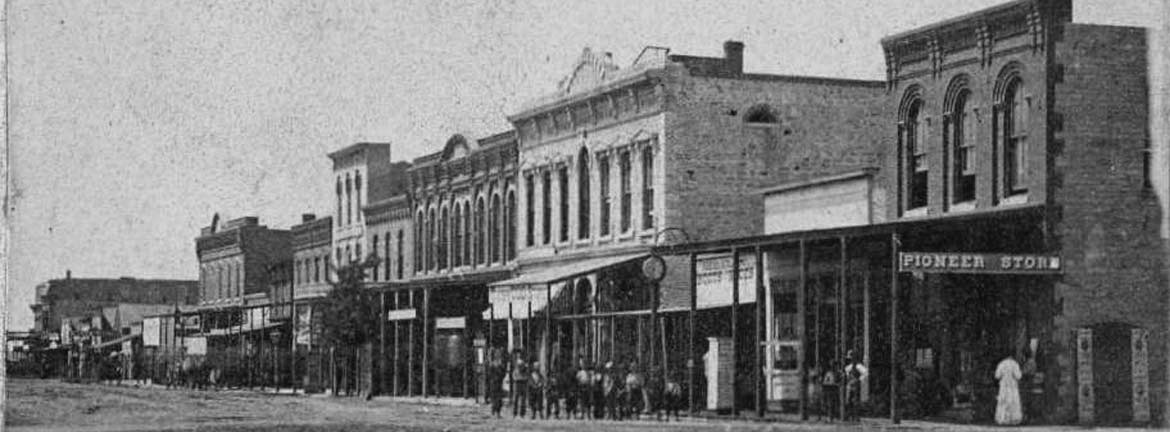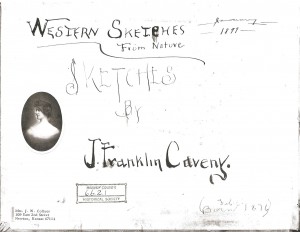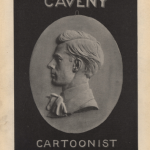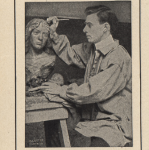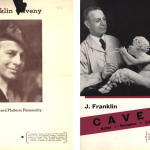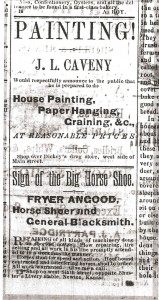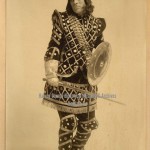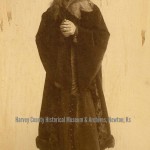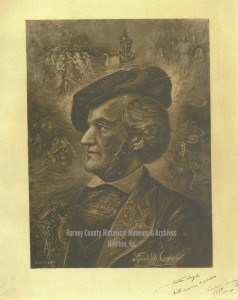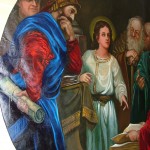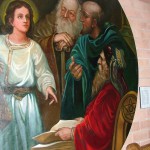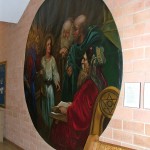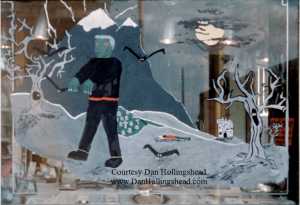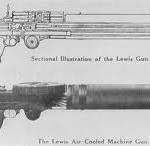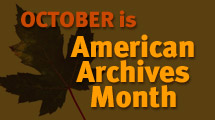By Kristine Schmucker, HCHM Curator
When I first started working at HCHM, I ran across a sketchbook that had been donated to the museum in 1966.
At the time I had no idea who J.Franklin Caveny was, but I enjoyed the sketches in the small book. The sketchbook was one of my picks for our current exhibit, “Stuff We Love,” and by now I have learned more about J. Franklin Caveny, a man of many talents.
The chalk-talker, J. Franklin Caveny, is the humorist of the company. . . . He drew with both hands landscapes of real artistic merit while he talked, and with a few deft strokes would transform the scene from ‘Sunrise on the Atlantic” to “Moonlight on the Hudson.”
Nationally, J. Franklin Caveny was known for his “Chalk-talks” and entertaining lectures. He traveled the country with his wife, Maude Wood, presenting programs and demonstrations from 1906-1944.
Poet, Fred Emerson Brooks wrote of Caveny in the Post-Reader:
“Caveny is a witty and artistic genius.
He makes birds fly;
He makes chalk fly;
He makes his tongue fly;
And his fingers fly;
And as the people laugh and wonder at those different flies,
They are amazed to see how time flies.
So take J. Franklin Caveny
If artist you would have any.”
This well-known, talented entertainer got his start in Harvey County and attended Newton schools.
His obituary 1944 stated;
“While [he] grew up in Newton, he began his career as a public entertainer early in life and traveled in every state and some foreign countries.”
J. Franklin was born February 16, 1876 to John Lewis and Louise Caveny in Newton, Ks. His father, John Lewis Caveny , was an early Harvey County settler that painted houses and hung paper. He also offered “Graining at reasonable prices.”
J. Franklin attended the South Side School, Newton (later McKinley School) in the 1880s.
By 1906, he had played a lead role in several of Shakespeare’s plays.
- J. Franklin Caveny as Richard III.
- “Yours as Richard III. J. Franklin Caveny, 1906”
- J. Franklin Caveny as Merlin
He married Maud Wood in 1909 and they traveled the country performing. Caveny maintained connections with his home community, giving artwork to friends and family. He also returned
“to the old home town every few years, at which time he would appear at meetings of clubs, societies and churches, donating programs of entertainment, and never failing to draw large audiences.”
Composer, Richard Wagner, was a favorite subject of Caveny’s prints. In the above print, Dreams of Wagner,” Caveny used scenes from Wagner’s operas – Meistersinger, Parifal, Lohengrin, Flying Dutchman, Tristin – to create not only the background, but also the image of Wagner. One person observed that it looks like Rhinemaidens swimming up his front shirt. The distinct silhouette above Wagner’s hat could be Siegfried forging his sword.***
Another print entitled the “Haunted Wagner” uses the female form to create the image of Wagner.
Caveny was only six years old when Wagner died, so one can only wonder at his interest in this famous composer.
In 1914, J. D. Nicholson commissioned Caveny to paint a large mural for the First Presbyterian Church, located at 7th and Main, Newton, entitled “The Christ Child Among the Doctors.”
The mural was removed when the church was razed in 1964 and installed in the new church located at 900 Columbus Ave., Newton.
J. Franklin Caveny died at Staten Island, NY after a brief illness while on tour. His ashes were buried in the Caveny family plot in Greenwood Cemetery, Newton, Ks.
Sources
- Evening Kansan Republican, 11 November 1902.
- Evening Kansan Republican, 24 February 1944 – J. Franklin Caveny Obituary.
- HCHM Photo Archives.
- Koppes, Linda. “Pulpits and Potlucks: A Photographic History of the Churches of Harvey County from 1872-2007.” History of the First Presbyterian Church. HCHM Archives.
- ***Info from Sam Jack, Newton Public Library 2024.
To see more Stuff We Love picks, visit the museum. Admission is free (donations accepted) and we are open Tues-Fri 10-4 and the 1st & 3rd Saturday of each month from 10-4.

